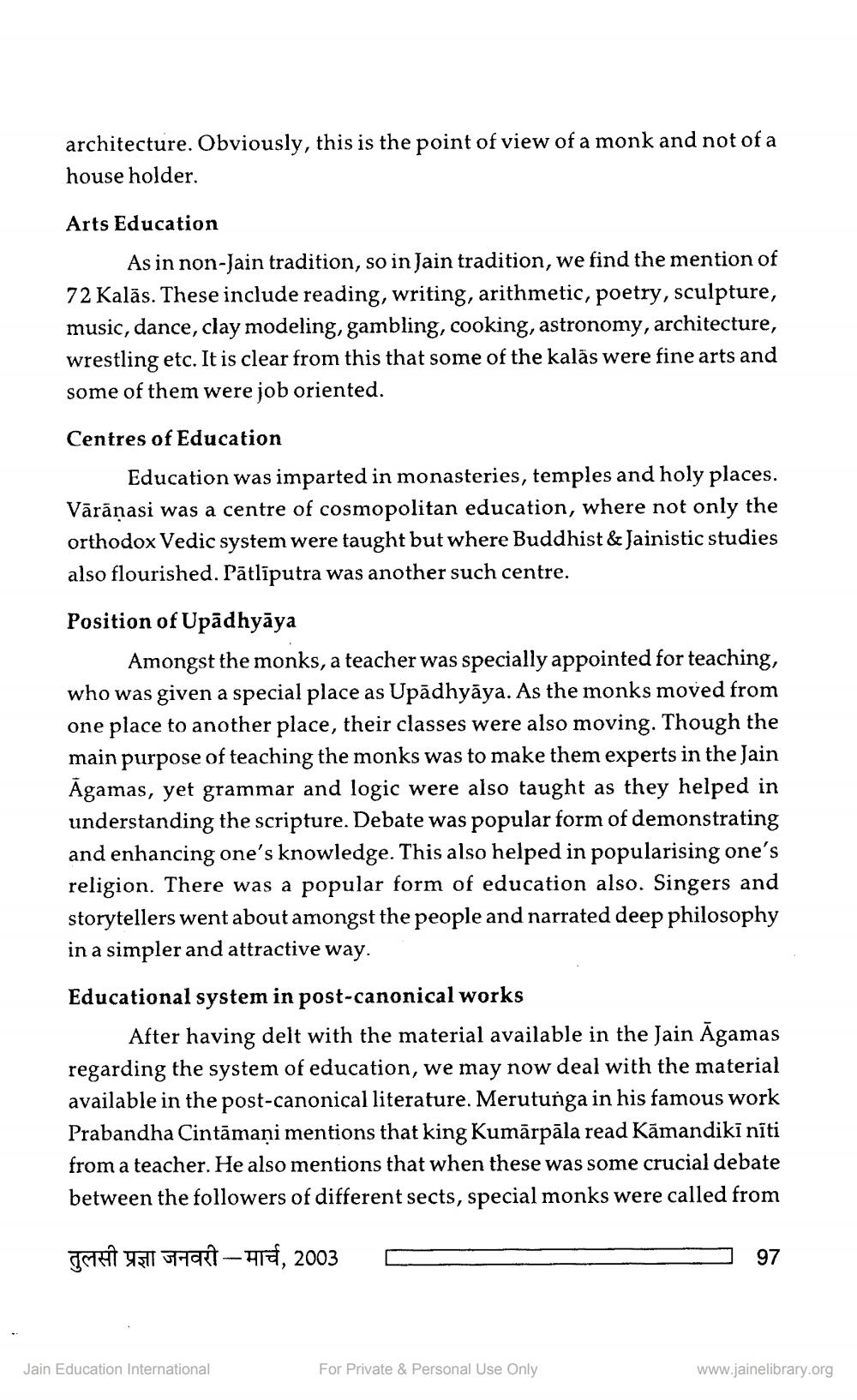________________
architecture. Obviously, this is the point of view of a monk and not of a house holder.
Arts Education
As in non-Jain tradition, so in Jain tradition, we find the mention of 72 Kalās. These include reading, writing, arithmetic, poetry, sculpture, music, dance, clay modeling, gambling, cooking, astronomy, architecture, wrestling etc. It is clear from this that some of the kaläs were fine arts and some of them were job oriented.
Centres of Education
Education was imparted in monasteries, temples and holy places. Vārāṇasi was a centre of cosmopolitan education, where not only the orthodox Vedic system were taught but where Buddhist & Jainistic studies also flourished. Pātlīputra was another such centre.
Position of Upādhyāya
Amongst the monks, a teacher was specially appointed for teaching, who was given a special place as Upādhyāya. As the monks moved from one place to another place, their classes were also moving. Though the main purpose of teaching the monks was to make them experts in the Jain Agamas, yet grammar and logic were also taught as they helped in understanding the scripture. Debate was popular form of demonstrating and enhancing one's knowledge. This also helped in popularising one's religion. There was a popular form of education also. Singers and storytellers went about amongst the people and narrated deep philosophy in a simpler and attractive way.
Educational system in post-canonical works
After having delt with the material available in the Jain Āgamas regarding the system of education, we may now deal with the material available in the post-canonical literature. Merutunga in his famous work Prabandha Cintāmaņi mentions that king Kumārpāla read Kāmandikīnīti from a teacher. He also mentions that when these was some crucial debate between the followers of different sects, special monks were called from
THE 4511 70-4E, 2003
-
97
Jain Education International
For Private & Personal Use Only
www.jainelibrary.org




